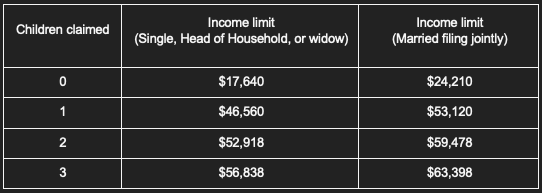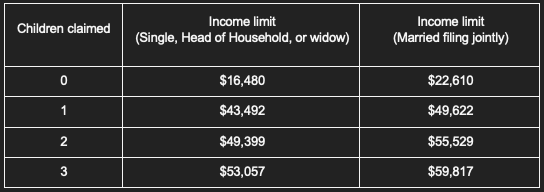Does Your Home Improvement Expense Qualify For Energy Tax Credit?
Homeowners can now take advantage of extended energy tax credit for home improvements promoting efficiency and renewable power. The tax credits, available through 2034, are even being expanded starting in 2023.
What purpose do Energy Tax Credits serve for home improvements?
In an effort to make homes more energy efficient, the government has extended two tax credits available for home improvements and residential clean energy equipment. The Inflation Reduction Act of August 2022 has increased the timeline and financial benefits associated with these tax incentives.
Energy Efficient Home Improvement Tax Credit
The Inflation Reduction Act recently extended and expanded the Tax Credit for Home Improvements that are Designed to be More Efficient with regard to how they consume power. Previously this credit had a lifetime limit of $500 and was known as the Nonbusiness Property Credit, but it has now been renamed. It will remain in effect until December 31, 2022.
Starting January 1, 2023, and up until January 1, 2033, households may be eligible to receive a tax credit of up to $1,200 annually under a new law – known as “Energy Efficient Home Improvement Credit” – which amended an existing one.
The new tax credit has a major advantage over its predecessor; it provides an annual limit rather than a lifetime one. In other words, by spacing out qualifying home improvements over a decade, you can claim up to $12,000 in returns on your taxes instead of just the $500 allowed before.
Making smart investments in heat pumps, biomass stoves, and boilers may be rewarded up to an extra $2,000 each year. This presents a great opportunity for individuals to take advantage of the financial incentive for greener living.
What are Energy Efficient Home Improvement qualifying home improvement for getting Energy Tax Credit?
Do certain home improvements qualify for the Energy Efficient Home Improvement energy tax credit? Starting from January 1, 2023, this tax credit can be equal to either 30% of the amount spent on eligible projects or up to an annual maximum of $1,200.
When it comes to energy-efficient home improvement credit, a current maximum of $3,200 applies annually. This includes an applicable credit limit of $1,200 and a separate aggregate yearly credit limit of $2,000 for electric or natural gas heat pump, water heaters, electric or natural gas heat pumps, and biomass stoves and boilers.
Residential Clean Energy Tax Credit
Taxpayers can take advantage of a substantial financial benefit with the Residential Clean Energy (RCE) Credit, which was extended and increased by Congress through its passage of the 2022 Inflation Reduction Act. This credit is equivalent to 30% off eligible costs for residential renewable energy amenities.
Through 2034, Congress passed an amendment to existing energy credit legislation: named Inflation Reduction Act. This bill altered applicable percentage rates as well as included battery storage technology in eligible expenses.
A tax credit is available for property brought into service between 2021 and 2033. This incentive gradually phases out over time – 26% in 2033, 22% in 2034, and 0% after December 31 of that year.
Residential Clean Energy Credit Qualifying Equipment?
The Residential Clean Energy Tax Credit is for users of solar, wind, geothermal, and fuel cell. This includes the installation of photovoltaics for the production of electricity, as well as adding a solar-powered water heater to one’s residence. To be eligible for the credit, a solar system must cover at least half of the home’s water-heating needs – hot tubs and swimming pools do not qualify.
For residential use, various technologies are available to produce electricity. These include up to 100-kilowatt turbines driven by the power of the winds. These geothermal heat pumps adhere to Energy Star standards set by the federal government, fuel cells utilizing a renewable resource such as hydrogen for a minimum of 0.5 kilowatts output, and battery storage systems.
Does the Residential Clean Energy Tax Credit Cover Roofing Expenditures?
When making improvements to one’s roof in order to mount solar panels and related hardware, it is important to note that these expenditures are typically not eligible for the Residential Clean Energy Credit. This is because they primarily serve as a means of upkeep or structural stability.
When it comes to tax savings, investing in solar roofing can be a great option. Solar roofing tiles and shingles are an excellent choice as they offer both protection for your home and the opportunity to generate solar electric energy. These investments may qualify you for a federal tax credit.
How Does Energy Tax Credits Work?
The federal government offers tax credits to citizens who invest in products and services that are designed to be more efficient with regard to the use of natural resources. These credits can be used to help reduce the cost of improvements such as new insulation or window replacements. Additionally, solar panel systems and other renewable power sources may also qualify for tax credits, making them more accessible to homeowners. This program is a great way for people to save money while doing their part in protecting our environment.
Are Energy Tax Credits Refundable?
Tax credits for the use of renewable energies are not refundable. This implies you could diminish your total tax to nothing, assuming you have a sufficiently large credit amount. However, receiving any additional credit as payment on your return is impossible when the sum surpasses the total charges due. Any unused renewable-based credits stated on your return can be transferred forward and counterbalance tax debt in upcoming years.
Will these energy efficiency tax credits make home improvements more cost-effective?
When it comes to home improvements, energy efficiency is certainly something that should be taken into consideration. These upgrades can help reduce those pesky heating and cooling bills, and they also come with potential tax credits that further enable homeowners to save money on their purchases. Therefore, when used in conjunction with cost-saving home improvements, these credits can be a great tool for lowering the overall cost of living.
In Conclusion
Those wishing to improve their homes in an energy-efficient manner may be eligible for a tax credit through Energy Efficient Home Improvement Credit.
Homeowners have a great opportunity to save money at tax time with Residential Clean Energy Credits. These credits can be applied toward specific pieces of equipment, such as solar panels, wind turbines, geothermal systems, and fuel cells.
The solar, wind and geothermal equipment installed in both your principal residence and any other home used as a residence can be claimed for the credit. However, fuel-cell equipment is eligible to acquire this credit exclusively when placed in the main house.
PriorTax offers an easy solution to get your taxes done right; our free dedicated Tax Professionals are here to help from start to finish. We guarantee our services will provide you with the highest return possible as we take the time to search for any and all available tax deductions and tax credits that you qualify for.














